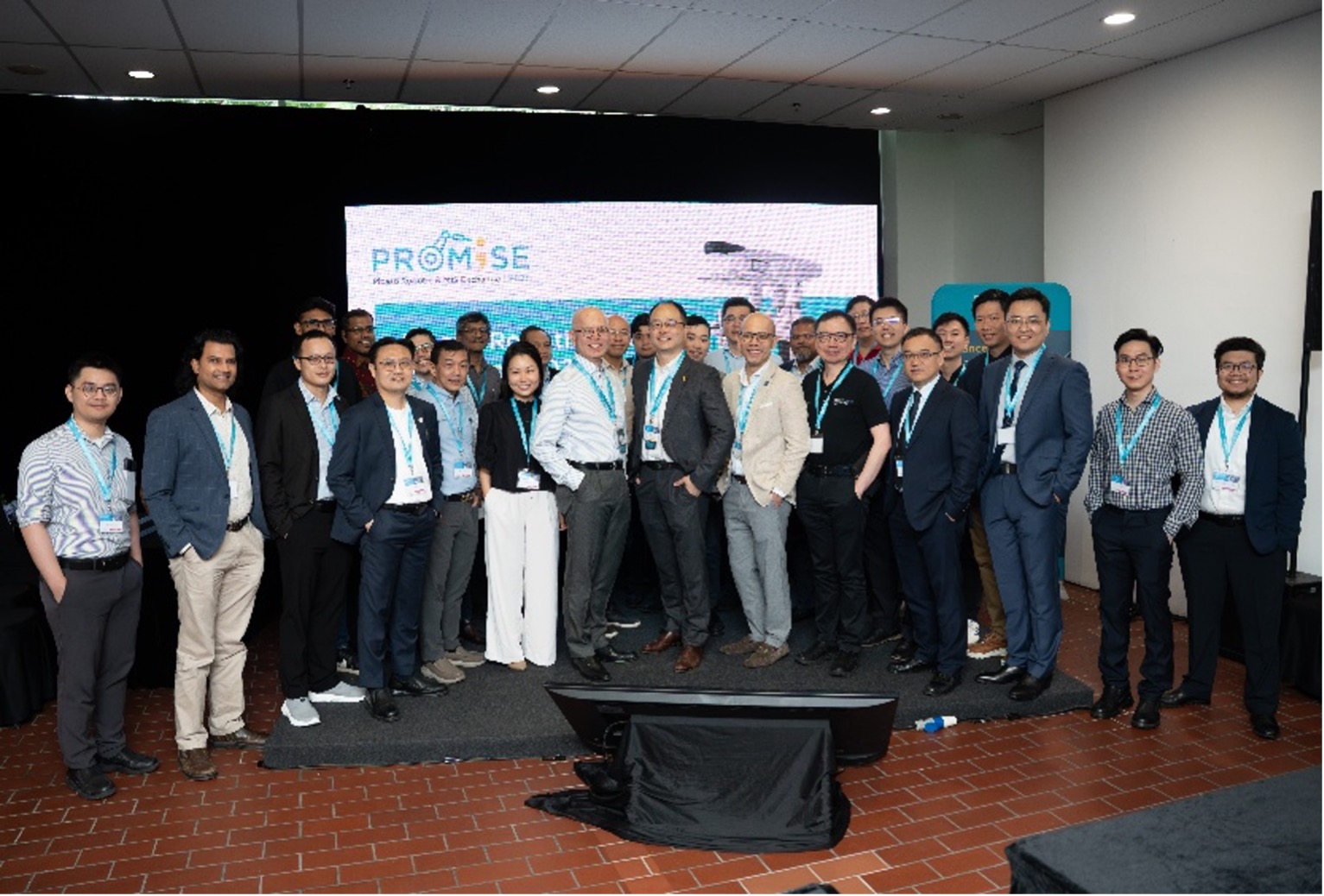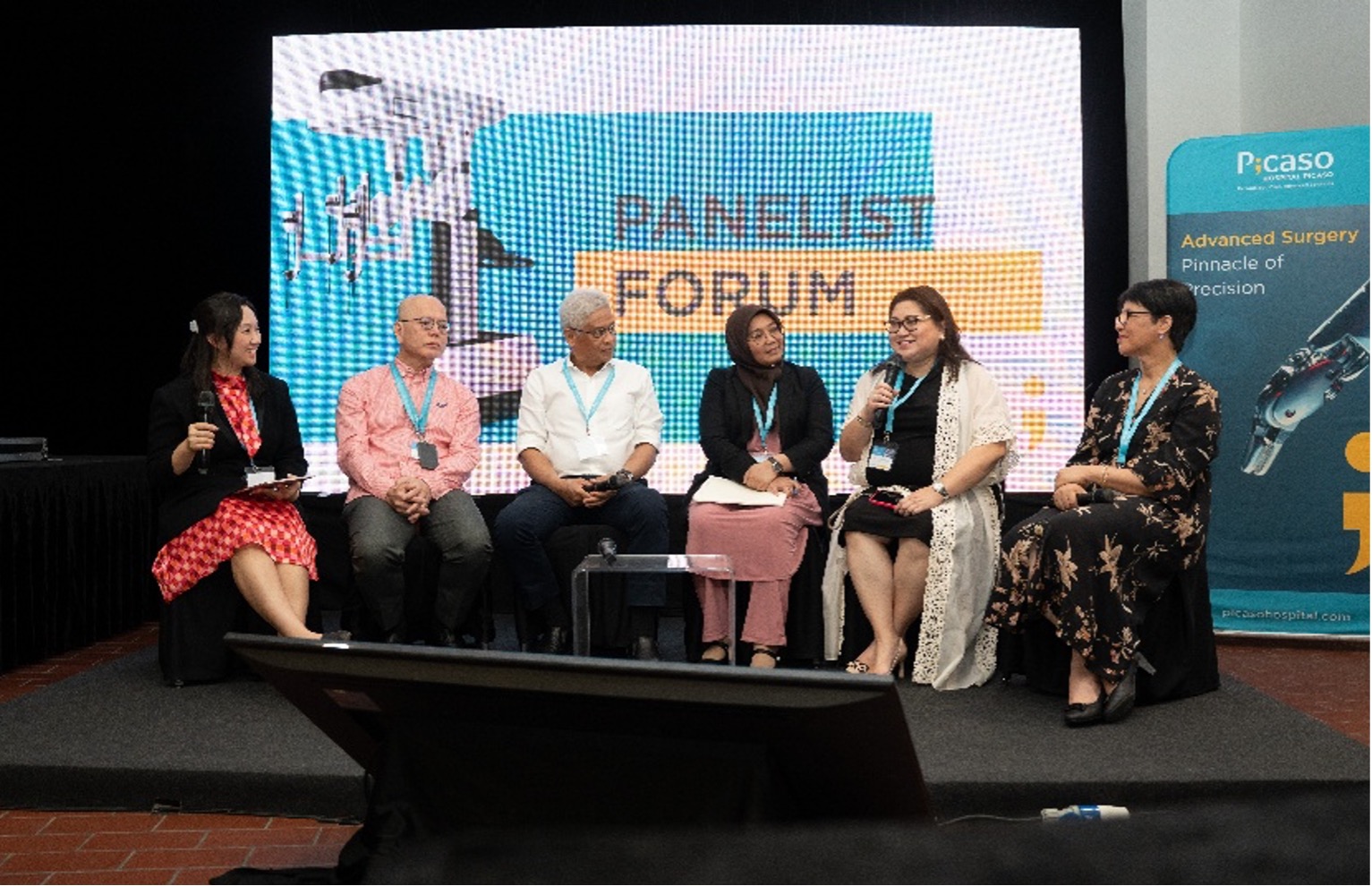Building capacity in robotic surgery: Evolving standards in credentialing and medico-legal frameworks
21 Oct 2025
Share
 \
\

Robotic surgery is rapidly reshaping the surgical landscape in Malaysia and across the region, offering patients shorter recovery times and improved outcomes. Yet its growing adoption raises critical questions of how best to train surgeons, credential practitioners, and prepare for the medico-legal implications that accompany new technologies. These pressing issues took center stage at the 2nd Picaso Robotic & MIS Exchange (PROMISE 2025), held from 26-28 September under the theme “A Milestone Event in Robotic & Minimally Invasive Surgery”. Organized under the leadership of Dr. Fam Xeng Inn (Organizing Chairman, PROMISE 2025), and endorsed by the College of Surgeons of Malaysia (Minimally Invasive Surgery Chapter), the Malaysian Urological Association, Hospital Canselor Tuanku Muhriz UKM, the Advanced MIS, Robotic & Ablation Society of Gynaecologists Malaysia (AMRAS), and the Malaysian Society of Colorectal Surgeons, the event brought together leading international surgeons from Malaysia, Singapore, Korea, China, the Philippines, Thailand, and the United States for live surgical demonstrations, didactic lectures, and interactive forums. The program showcased the breadth of robotic applications across urology, gynecology, colorectal, and general surgery, while also addressing key issues of safety, quality, and credentialing. During one of the featured panel discussions, experts called for the development of robust training, credentialing, and governance frameworks to match the pace of surgical innovation, ensuring that new technologies are adopted safely and sustainably.
Shaping credentialing pathways for safe robotic surgery
Opening the discussion, Datuk Dr. Aziz reflected on Malaysia’s early experience with robotic surgery, where adoption preceded the establishment of structured credentialing. While this flexibility allowed early uptake, it also created inconsistencies in surgeon readiness. Over time, the process has become more streamlined, with efforts moving toward unified standards complemented by platform-specific training from industry partners. On the question of prerequisite skills, he argued that mastery of laparoscopy is not mandatory before transitioning to robotics. “I do think it’s fine for open surgeons to graduate directly into robotic, because open surgeons already have a 3D vision of pelvic structures. Knowing this anatomy helps us navigate the robotic platform fairly well,” he explained. At the same time, he acknowledged that laparoscopic skills could enhance proficiency: “Mastering laparoscopic technique will make you an excellent robotic surgeon because you are already familiar with the gadgets. Even laparoscopic tools are now evolving towards robotic designs.”
Dato’ Dr Loh further reinforced that technology cannot replace surgical fundamentals. “You must remember, the robot does not add to your knowledge,” he cautioned. For this reason, he stressed the importance of proctorship: experienced mentors guide trainees through anatomy, identify danger zones, and reinforce safe principles. “The basics remain the same: know your anatomy, know the instruments, know their limitations—and that is how we achieve safe surgeries.” From an international perspective, Dr. Jennifer shared the Philippines model, where a tiered credentialing system has been implemented. Surgeons progress through simulation, bedside assistance, proctored cases, and finally independent practice. This framework, she noted, ensures that competencies are systematically assessed.
As the discussion moved from training pathways to independent practice, panelists agreed that true competence goes beyond case counts. Dato’ Dr. Loh pointed out that the ability to manage anatomy, troubleshoot complications, and convert to open surgery when necessary are equally critical. Datuk Dr. Aziz reminded the audience: “The first step in robotics is not docking the robot. You must first be a well-trained surgeon. Surgery is a skill acquired over time.” Dr. Jennifer further added that commitment matters as much as competence: “Passion is key—having the passion to learn and practice at your best makes the difference.”
Training across platforms: Balancing innovation and medico-legal safeguards
As newer robotic systems enter the Malaysian healthcare landscape, training variability has become a growing concern. Dato’ Dr. Loh observed that while industry-provided training is necessary, it cannot be the sole determinant of readiness. “Regardless of which robot we use, the principles of safe surgery must not change,” he said, emphasizing that credentialing should remain platform-agnostic. The panel agreed that institutions must also guard against marketing-driven adoption. Innovation, they stressed, must never outpace safeguards.
This naturally led to a discussion on medico-legal preparedness. Offering a legal perspective, Ms. Fazleeza explained that in litigation, institutions are often the first to be named, but inadequate documentation or poorly defined credentialing can quickly implicate individual surgeons. She underscored the importance of comprehensive informed consent, detailed operative records, and clear documentation of training pathways. “When something goes wrong, the court looks for evidence—what was the surgeon trained in, and what was the patient told?” she said. The issue of system malfunction was also raised, with panelists acknowledging the grey areas of liability between manufacturer, hospital, and operator. For now, robust institutional frameworks and clear documentation remain the most reliable defense.
Patient expectations, economic realities, and future horizons
The panel also considered the economic realities of robotic surgery. Datuk Dr. Aziz observed that while patients increasingly request robotic procedures, many assume they are inherently superior. “It is our responsibility to counsel them on risks, benefits, and realistic outcomes,” he said. Insurance coverage remains limited, with payors often resistant to added costs. Dato’ Dr. Loh suggested that stronger outcome data—ideally beyond disease-related endpoints and supported by local studies, such as reduced complications or shorter recovery times—could eventually help shift policy. Until then, transparent communication and patient advocacy remain essential.
Looking ahead, the panel expressed optimism about the integration of artificial intelligence (AI), fluorescence imaging, and advanced visualization in robotic platforms. Datuk Dr. Aziz highlighted how AI could eventually support intraoperative decision-making but stressed that training frameworks will need to adapt to prepare surgeons for these emerging competencies. Building on this, Dato’ Dr. Loh reminded the audience that the integration of diagnostic technologies into the operative field is not entirely new. “In open surgery, we used intraoperative ultrasound and sentinel node detection,” he noted. “In robotics, we already have miniaturized probes that can be manipulated with robotic arms.” Such advances, he cautioned, bring fresh learning curves that require surgeons to continually retrain and adapt. Even as innovation accelerates, medico-legal safeguards must evolve in parallel. Ms. Fazleeza further emphasized that documentation and transparency remain essential: “Legal protection begins long before a complication—it begins with proper credentialing and informed consent.”
Conclusion
This interactive forum underscored that the promise of robotic surgery lies not only in advanced tools, but in the systems that ensure their safe use. Training, credentialing, and medico-legal frameworks must evolve in parallel with innovation to safeguard both patients and practitioners. As robotic surgery becomes increasingly established across Malaysia and the wider region, the responsibility rests with hospitals, professional bodies, and regulators to embed consistent standards. As the panelists emphasized, while technology can expand surgical possibilities, enduring principles—measured training, sound judgment, patient safety, and ethical practice—must remain the compass by which the field advances. The task ahead is not simply mastering new platforms but fostering a culture of safe innovation that ensures every patient shares in the benefits of technological progress.

Figure 1. Picaso Robotic & MIS Exchange 2025 (Day 2: Urology)
Center stage (L to R): Dato’ Dr. Loh Chit Sin and Dr. Fam Xeng Inn, Consultant Urologists of Hospital Picaso; and Dr. Henry Ho, Consultant Urologist of Singapore General Hospital, posing for a group photo with international delegates and medical professionals on the second day of Picaso Robotic & MIS Exchange 2025

Figure 2. Picaso Robotic & MIS Exchange 2025 (Day 3: Gynecology)
Our key experts of panelists, with invited medico-legal team discussing on patient safety and legal preparedness in robotic-assisted gynecological surgery
References
- Panel discussion forum. Safeguarding quality & safety in robotic surgery: The need for structured credentialing and legal preparedness. Presented at the 2nd PICASO Robotic and MIS Exchange (PROMISE) 2025; September 26-28, 2025.
This is an independent editorial article, published and distributed through unrestricted educational support from Integrated Oncology Center (Kuala Lumpur) Sdn. Bhd. (Hospital Picaso), for the purpose of continuing medical education only. The views expressed in this publication reflect the experience and/or opinion of the author(s) and are not necessarily those of editors, publishers, and sponsor(s). Because of rapid advances in medicine, independent verification of clinical diagnoses, medical suitability, and dosage should be made before treatment prescription. The appearance of advertisement, if any, has no influence on editorial content or presentation and does not imply the endorsement of products by the publication, or its authors and editors.




